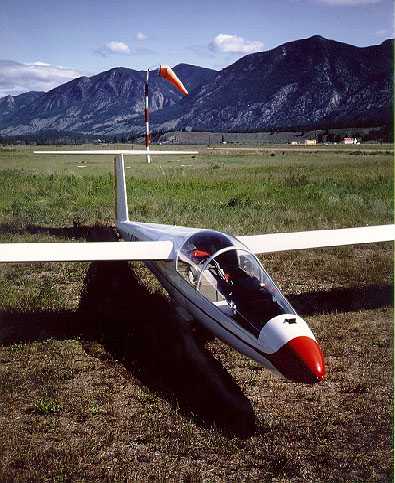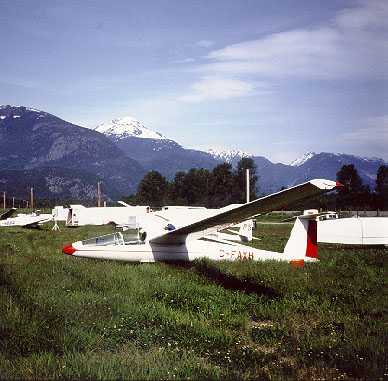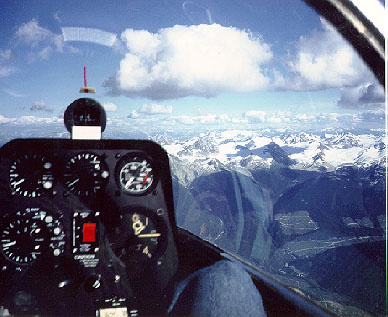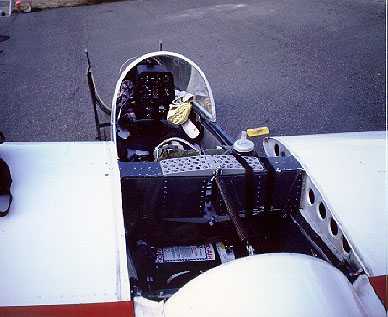This has been a great ship to fly. So far I have flown in 6 contests, and have just over 500 hours on it myself. Did a 500 km o&r a couple of years ago, and normally fly about 2500 km of cross country each year. Lost track of the number of off field landings, but it is 12 or 13 now, in this ship.
When I first starting looking at buying this HP14T, many people told me that it would be hard to fly, and that those 90 degree flaps were really bad. As it turned out none of them had actually ever flown a HP. I did talk to several people that had flow HP gliders who all told me that it was easy to fly. I have found this ship to be great to fly, the ailerons are a bit heavy, but once I am flying its not noticed any more.
For takeoff I use 10 degrees of flap if it is windy and 20 degrees if there is very little wind. After takeoff, I normally put the flaps to 20.
This HP14 has the hydraulic
flap actuation system, and it works very well. I replaced all of the O rings
before I started flying, and it has not caused any problems in 6 years. I have
not had any problems with takeoffs with the HP14. For landing I normally do
a steep approach, using 60 or more degrees of flap. Normal approach speed is
50 knots, and I will try to get up to the full 90 degrees just before landing.
Using 60 degrees or less seems to make the ship float quite a bit. Landings
can be a bit of a handful if it's gusty, but generally I have had no problems
at all.
Stalling speed is 40 knots indicated with no flaps, and 30 knots indicated with full flaps. With 0 flaps, the ship will break when it stalls, but with 10 degrees or more, if you approach the stall speed slowly, it will just mush along, with full back stick. If you approach the stall speed fast, it will break cleanly. I have tried spins with 0 flap, and it takes about ¾ of a rotation to break out of the spin, using normal stall recovery methods.
I have made some glide comparisons with other sailplanes, and the HP14 seems to be fairly close to a Libelle 201, ASW 19, STD Cirrus, etc. The wings do need to be refinished. I have flown many times up to red line, 135 knots, and it feels like its on rails at high speeds. It thermals well, but with no trim, you need to fly it all of the time.
The ship rigs quite easily, with most of the rigging time taken up with taping the fairings.
I have had to replace all of the cables, the previous owner had greased them at the fairleads, and they picked up dirt and got badly worn very fast. I also replaced the aileron pushrods, as they also had been greased at the guides, and ended up with wear marks. I also put new seals into the hydraulic brake system. I did have a bit of trouble with the oleo, as the previous owners had flown with no dust boots on the oleo, and the cylinders had gotten scored. Once I polished out the scratches and replaced the O rings, it still would sometimes loose air pressure. In the end I found some replacements for the O rings, that have a double lobe type of profile, so that they would not roll when the oleo moves, after that I had no problems. I use a strut pump, and just air in the oleo, and have had no problems. Otherwise, not much maintenance, just go flying.
The ship needs to be refinished, as the paint is getting chipped.
Good Flying
Mike Thompson



